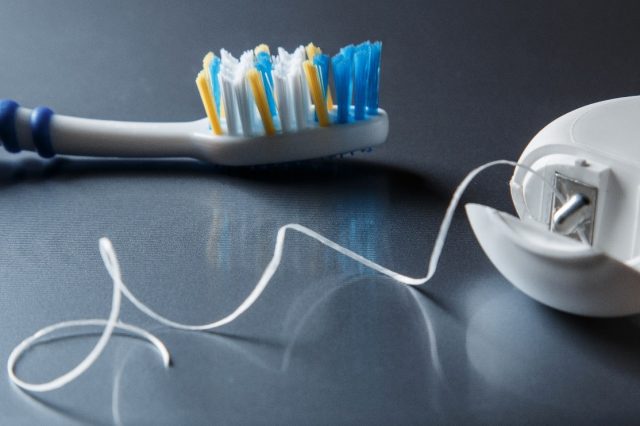Dental hygiene is a crucial part of overall health, but it’s often overlooked or misunderstood. A healthy smile is not just about aesthetics; it plays a significant role in your overall well-being. From avoiding cavities and gum disease to ensuring fresh breath, proper dental care is essential. In this comprehensive guide, Lloyd Harris DDS will explore the A-Z of dental hygiene and provide essential tips for maintaining a healthy smile.
A is for Appointments
Lloyd Harris DDS on Regular Dental Check-ups
- Routine Visits: Schedule regular visits to the dentist, typically every six months, for professional cleanings and check-ups.
- Early Detection: Regular appointments help in the early detection and treatment of oral health issues.
B is for Brushing
The Right Way to Brush
- Technique: Use a soft-bristled brush and fluoride toothpaste. Brush gently in a circular motion for two minutes, at least twice a day.
- Timing: Brushing after meals helps remove food particles and prevent plaque buildup.
C is for Choosing the Right Tools
Lloyd Harris DDS on Selecting Dental Products
- Toothbrush: Choose a toothbrush that fits comfortably in your mouth. Consider electric toothbrushes for a more thorough cleaning.
- Toothpaste: Select fluoride toothpaste for its enamel-strengthening benefits.
D is for Diet
Eating for Oral Health
- Nutrition: Consume a balanced diet rich in vitamins and minerals. Calcium and vitamin D are particularly important for healthy teeth.
- Sugar Intake: Limit sugary and acidic foods and drinks, as they contribute to tooth decay.
E is for Education
Understanding Oral Health
- Stay Informed: Learn about common dental issues and treatments. Being informed helps you make better choices about your oral health.
- Children’s Education: Teach children about dental hygiene from an early age.
F is for Flossing
Lloyd Harris DDS on The Importance of Flossing
- Daily Habit: Floss at least once a day to remove plaque and food particles from between teeth and under the gum line.
- Techniques: Proper flossing technique is key. Gently slide the floss up and down, following the curve of each tooth.
G is for Gum Health
Protecting Your Gums
- Gum Care: Pay attention to your gums. Red, swollen, or bleeding gums can be signs of gum disease.
- Regular Cleanings: Professional cleanings are essential for maintaining healthy gums.
H is for Hydration
Drinking Water for Oral Health
- Saliva Production: Drinking water helps maintain saliva levels, which is essential for oral health.
- Rinse After Meals: Rinse your mouth with water after meals to help clean away food particles and bacteria.
I is for Immediate Action
Lloyd Harris DDS Responding to Dental Issues
- Don’t Delay: If you experience tooth pain, sensitivity, or notice any changes in your oral health, seek dental advice immediately.
- Emergency Care: Know what to do in case of a dental emergency, such as a knocked-out tooth.
J is for Just Say No to Tobacco
Tobacco and Oral Health
- Smoking and Chewing: Tobacco use in any form increases the risk of gum disease, tooth decay, and oral cancer.
- Quitting Tobacco: Seek support to quit smoking or using tobacco products.
K is for Knowing Your Mouth
Self-Awareness
- Regular Checks: Keep an eye on any changes in your mouth, including your cheeks, tongue, and the roof of your mouth.
- Oral Cancer Screening: Regularly check for signs of oral cancer, especially if you’re at higher risk.
L is for Limiting Alcohol
Alcohol’s Impact on Teeth
- Moderation: Excessive alcohol consumption can dry out your mouth and erode tooth enamel.
- Regular Rinsing: Rinse your mouth with water after drinking alcoholic beverages to mitigate their acidic effects.
M is for Mouthwash
Lloyd Harris DDS Using Mouthwash Effectively
- Additional Cleaning: Use mouthwash as an additional cleaning tool, not a substitute for brushing and flossing.
- Choosing Mouthwash: Opt for a therapeutic mouthwash that helps in reducing plaque, gingivitis, cavities, and bad breath.
When it comes to maintaining good dental hygiene, there are several factors to consider. Firstly, it’s important to schedule regular dental visits with a qualified dental professional who can help you identify and address any potential issues before they become more serious. Secondly, proper brushing and flossing techniques are crucial for removing plaque and bacteria from your teeth and gums. This includes brushing twice a day with fluoride toothpaste, using a soft-bristled brush, and flossing at least once a day. Additionally, a healthy diet that is low in sugar and processed foods can help support good oral health. Lastly, certain lifestyle choices, such as avoiding tobacco products and limiting alcohol consumption, can also play a role in maintaining healthy teeth and gums. By following these tips from A-M, you can take control of your oral health and enjoy a healthy, beautiful smile for years to come.








